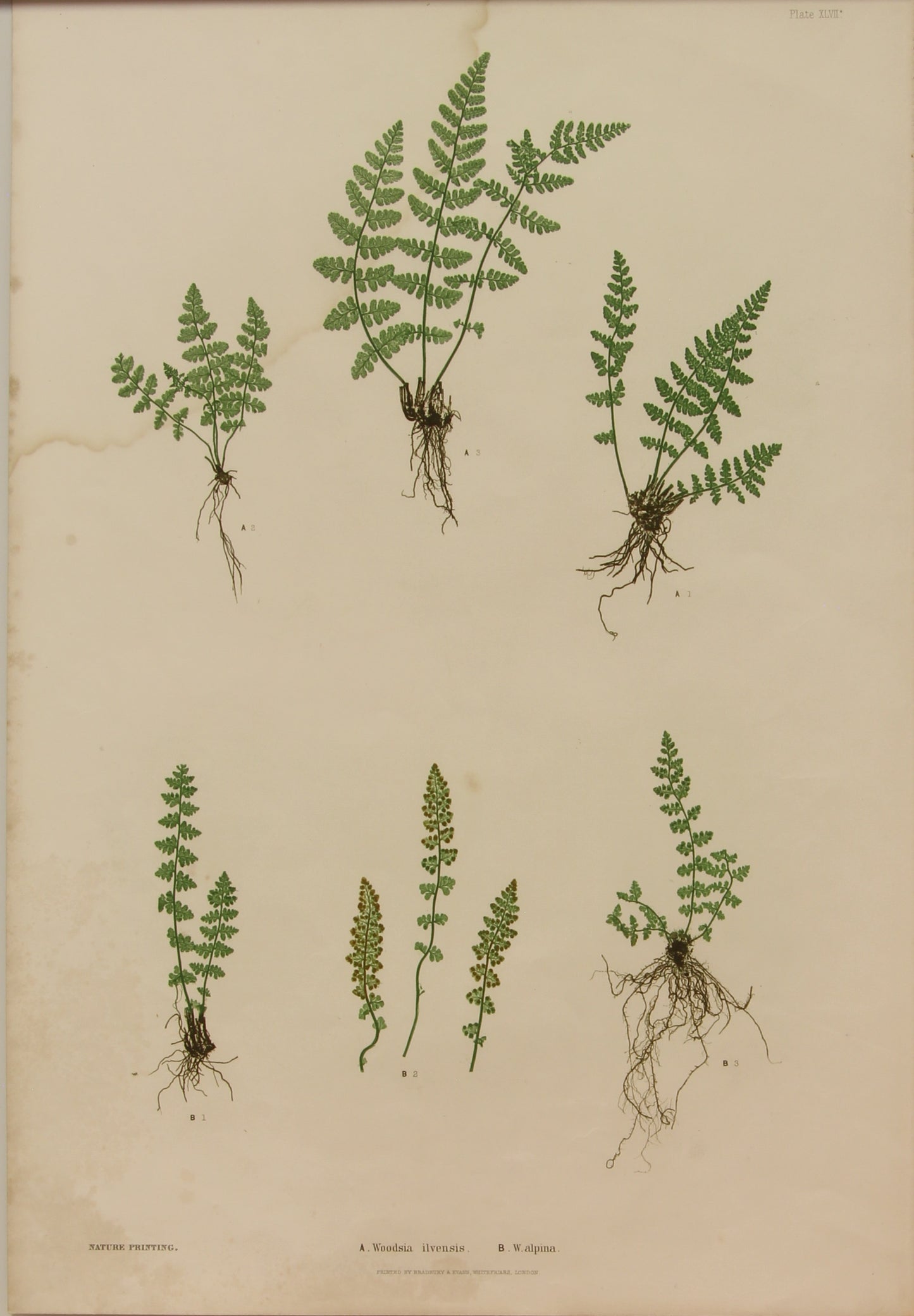Antiquarian Print Shop
Botanical, Nature Printing, Bradbury Henry, c1865
Botanical, Nature Printing, Bradbury Henry, c1865
Couldn't load pickup availability
Date: c1865
Artist: Bradbury Henry
Paper Size: 370 x 560mm
Technique: good
Price: $350
Description: Nature printing with later hand colour
Provenance: Nature Printing
Nature printing is a printing process developed in the 18th century that uses plants, animals, rocks and other natural subject matter to produce an image. the image undergoes several stages to give a direct impression onto materials such as lead, gum, and photographic plates which are then used in the printing process.
While some sources state that it was Benjamin Franklin who invented nature printing from leaf casts, using a copper plate press, in 1737 to thwart counterfeiters of paper money bills, other sources also report Franklin's friend, Philadelphia naturalist Joseph Brintnall, to have made contact nature prints from leaves about 1730. Together they sent nature prints which were printed directly from inked leaves to English naturalists.
Another person attributed with the invention of the process, Naturselbstdruck, is Alois Auer; the first publication, of instructions for the process, was by this Austrian printer in The Discovery of the Natural Printing Process: an Invention ... Vienna, 1853. This was written in four languages by the author. He shows the use of plants, a fossil fish, and lace impressed by roller onto a lead plate, this is hand coloured and transferred to the final print.
Another printer, the Englishman Henry Bradbury, immediately used Auer's Nature Printing process to publish work of his own. These included two major botanical works;
The Ferns of Great Britain and Ireland, Moore, Thomas(1857) and the rendition
of these species was readily adapted to the process; the two dimensional print
would reveal form and detail for the identification of species.
The Nature-Printed British Sea-Weeds, W.G. Johnstone & A. Croall. 1859-60.[5]
Sherman Denton in his book As Nature Shows Them: Moths and Butterflies ... used the wings of the species he was describing by pressing them into the page itself. For this work he used over 50,000 insects
Biography:
Bradbury Henry
He was a son and eldest of seven children of a printer, William Bradbury (1800–1869) and
his wife, Sarah, and brother of William Hardwick Bradbury with whom he went into business in publishing.
From 1856 he took an interest in the security aspects of banknote printing and set up the business Bradbury & Wilkinson. Bradbury had studied Auer's discovery in Vienna and had patented his own version in London.
After being accused of plagiarism by Auer, Bradbury took his own life by drinking acid
Bradbury is known for his book The Ferns of Great Britain and Ireland with author Thomas Moore and editor John Lindley published in 1855.
It used the innovative technique of nature printing invented by Alois Auer and Andreas
Worring in 1852 and improved by Bradbury. The technique consisted of pressing a leafy
specimen onto a thin, soft lead plate, leaving an intaglio impression with very fine detail.
Share


